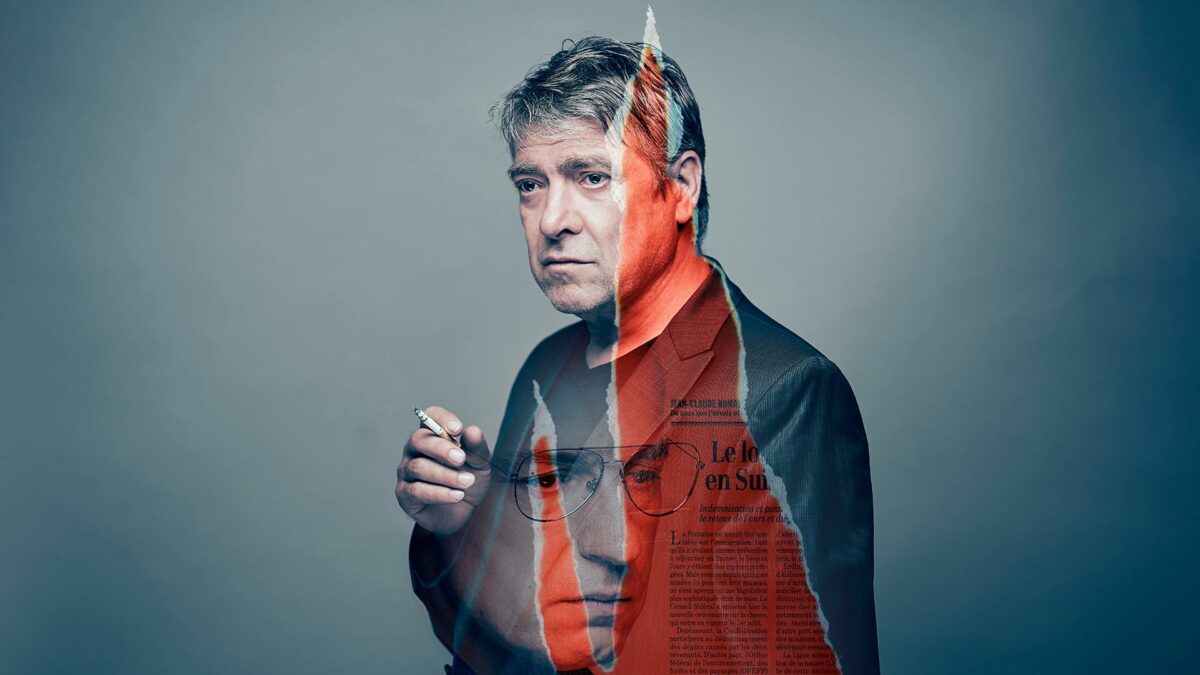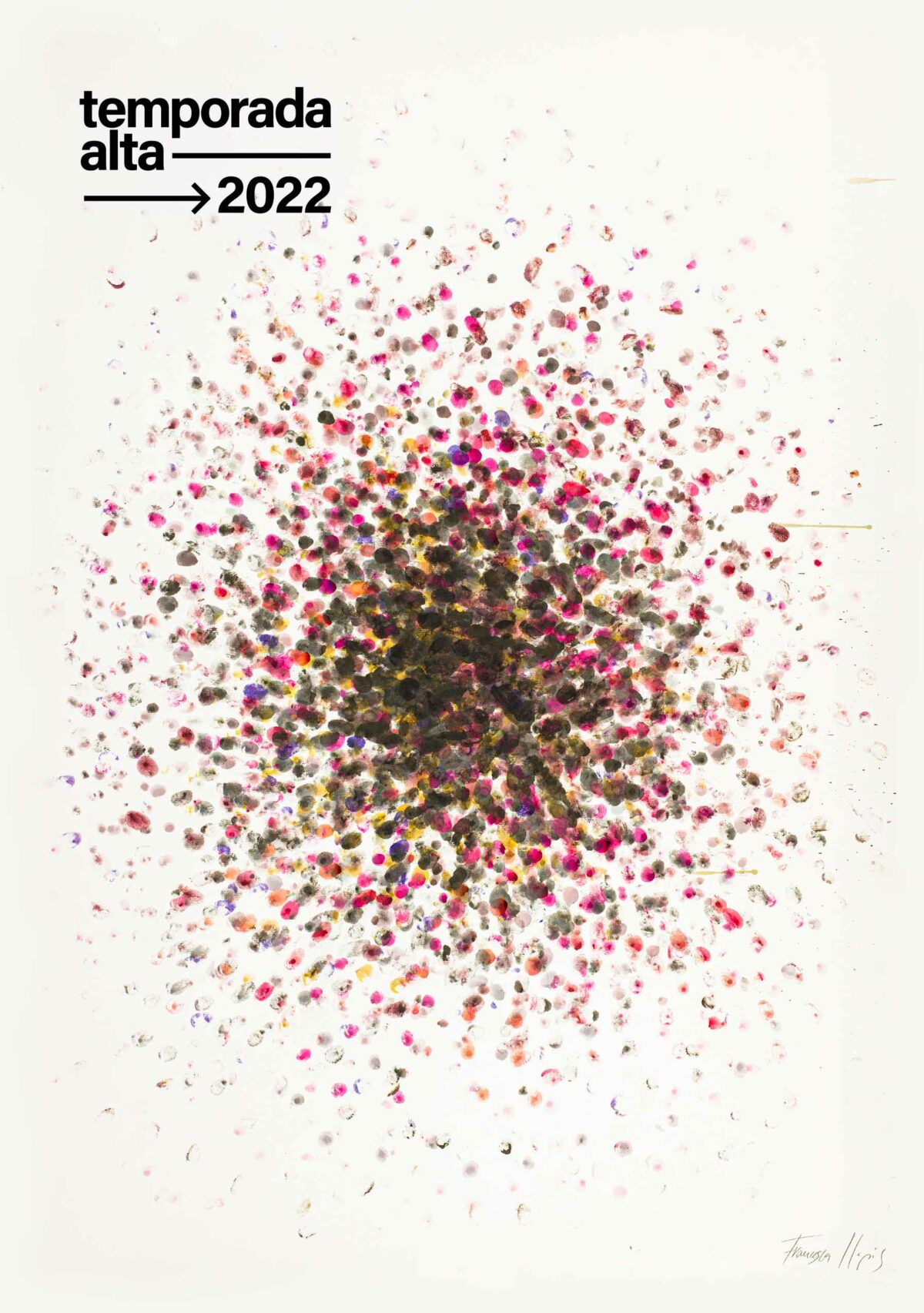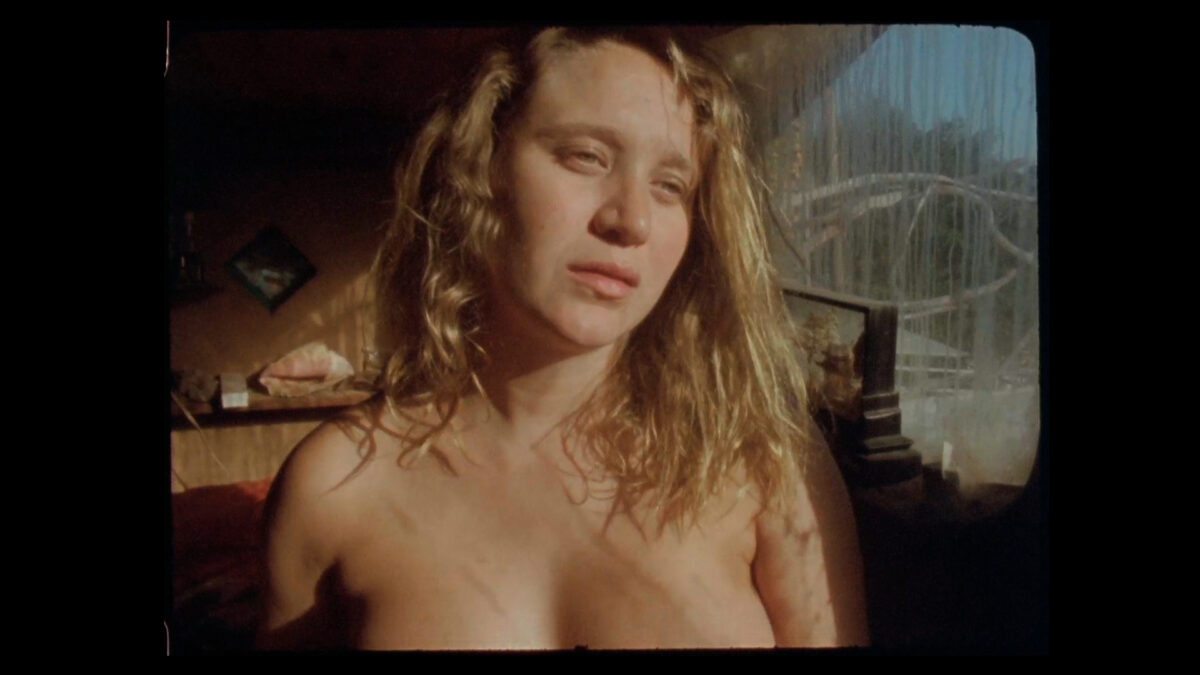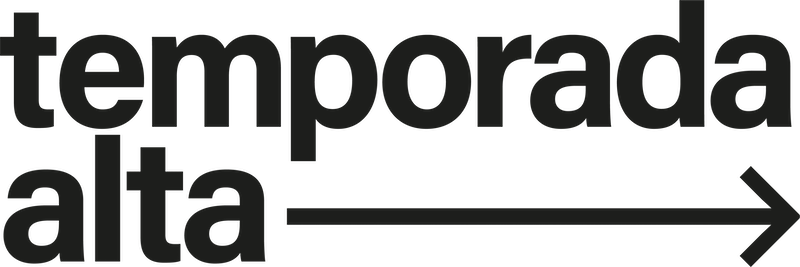2022 Edition
Temporada Alta, with the reality of the present
We are moving forward in our third decade of existence, with an edition that presents a program of 107 shows spread over 21 stages over the course of 10 weeks. This year, we have increased the number of sub-seats (Banyoles, Bescanó, L’Escala, Palafrugell, Puigcerdà, Sant Gregori, Torroella and Vilajuïga) to which Barcelona is added, for the first time, where we are reviving a classic: Ritter, Denne, Voss by Krystian Lupa, which can be seen at Teatre Romea. Also for the first time, we will premiere a show inside the Cathedral of Girona: the Confessions de Sant Agustí reading, interpreted by Joan Carreras.

The 2022 program is a good example of how the theater currently being made in Catalonia, Spain and the rest of the world speaks more than ever about the reality of the moment. We have works on homophobia, old age, the rise of fascism, housing, gender issues or the phenomenon of Tik Tok, among many others. All these montages, in addition to their theme and artistic quality, have been chosen because they are conceived without the desire to preach or indoctrinate anyone. Rather, it is a social theater that shows reality “without judging its characters”, as Peter Brook said that his admired Shakespeare had always done in his texts.
31 years of Temporada Alta, where we continue to offer a program that mixes local artists with a notable international presence, the impulse to create, the balance between more experimental productions and proposals and initiatives that continue to grow, such as our educational projects from A Tempo which, in addition, this year, the public can support in a very simple way, by making a donation during the process of buying tickets.
Documents


The poster: Francesca Llopis or creative energy
Around 2014, Francesca Llopis started a series of black monochrome drawings with the title of Nosaltres i l’estat de les coses. These are striking drawings that show a kind of exploding planets. The centre of the drawing, in the middle of the paper, is a kind of explosion inside an irregular circular shape, like a planet, from which emerge black dots made with fingers, thick brush strokes and paint stains that spread from the inside to the outside. These are a series of drawings that Francesca Llopis took up, along with other more material works, throughout 2015 and 2016 and that the artist has shown in her latest exhibition. Agapemi. La constel·lació dels meus amors (2022), at the Museum of Painting of Sant Pol de Mar. These are drawings of a visionary nature and of great expressive force, of a considerable size, 50 x 70 cm or 140 x 110 cm, which are made with a particular personal technique that Francesca Llopis executes with her fingers, hands and unique brushstrokes. The title of the series, Nosaltres i l’estat de les coses, refers us to the desire to describe our world, the state of affairs, which is certainly not optimistic. Rather, it places us in an apocalyptic landscape where health, economic, social, and ecological crises are part of our immediate environment. Certainly, although these drawings were made before the pandemic and the war in Ukraine, there is no doubt that they advance in this devastated landscape of our time.
However, Francesca Llopis is not an artist who is characterized by her pessimism, or by her tendency to melancholy, on the contrary, hers is a luminous work, it is full of folds and more folds, of new looks and experiments, of renewed energies, to the point that it often advances in many directions, with different fixations, and surprises with its ability to open up new expressive territories. Fruit of the evolution of this series of drawings, Nosaltres i l’estat de les coses, arises, with the title of Desclosa (2019), a splendid drawing that is like the epiphany of what can be born and what can happen. Like the flower that opens or the life that is born, this drawing that has been chosen as the visual emblem of the Temporada Alta Festival 2022, is a celebration of life and creation. These opaque, black bodies of Nosaltres i l’estat de les coses, suddenly begin to soak in light, to generate colours and to emit an energy that spreads in all directions like the irradiation of a force, of an expanding power. An energy, a force, a subtle and inexhaustible power that reaches us Desclosa.
In fact, during the confinement, in 2020, Francesca Llopis made a series of bright drawings, in response to the situation of isolation and closure, in which landscapes and dark spaces, often created with black dots, were transformed in spaces of colour, in light sources full of red, blue, yellow dots, which arise from the black mass, also executed with fingers, scattered on the blank paper.
All of these confinement drawings have their origins, in part, in this work Desclosa, which for me symbolizes the space of creation, that dark and diverse magma from which ideas and creative energy arise, that force that emerges every day, like renewed life, every morning, with the dawn. That creative energy that is open to life, that is open to the world, that transmits to us true art, true theatre, good literature that have the strength to drag us and make us passionate not only a moment but also with the duration and persistence of the permanent in the flow of things. With the fervour of perseverance, to use a title and precise and precious words from the long-lost Carles Santos. It is also the lightning that does not cease by Miguel Hernández. All these things, and still other ideas and riddles, are what this work suggests to me, at once powerful and fragile, this beautiful drawing that opens like the flower, like the rose: Desclosa.
Manuel Guerrero Brullet
Francesca Llopis (Barcelona, 1956)
Trained at the EINA School of Art and Design in Barcelona, founded by the artist and poet Albert Ràfols-Casamada, to study the poetics of space and painting, she began a period of residencies with scholarships throughout the 1980s. Starting at the Teater Studio in Warsaw to contemplate scenography from the point of view of painting advising Fabià Puigserver (director of the Teatre Lliure, Barcelona), this residence marked a turning point in her career where the concept of travel would be part of her artistic approach.
It was in Milan, Rome, and London that she began her search for mazes as a metaphor for the city, culminating in her stay and painting of a dome in New York’s West Village. Thanks to a grant from the Spanish Ministry of Culture, she travelled to Egypt, Yemen and Crete in search of mazes. And with a scholarship from the Rome Academy and the Nimes School of Fine Arts, she completed her work with cavities and labyrinths, generating works such as Història d’una temptació, Els dits gèlids and Tráfico de efectos (between 1983 and 1986), exhibited in Montpelier, Madrid and Barcelona.
In the late 1980s, Arnau Puig defined her painting as “semantic constructivism”. Then, she participated in the exhibitions Becarios at the Spanish Academy in Rome and Llopis at the School of Fine Arts in Nîmes.
During the 1990s, she presented La societat és una flor carnívora (x-rays and phrases from May 68 as an installation artefact), and ephemeral sculptures such as Un embolic magnífic, Malaltes d’amor and Paranys foscos.
Entering the 21st century, she created her first video installations: 2 habitacions amb vistes (Santa Monica Art Centre, 2001), ETC (Saura Museum, Cuenca, 2004-06) and Memòria d’un iceberg (Barcelona, Osaka and Sao Paulo, 2011-2015).
In recent years, she has created works such as Traction-Action (performance presented in Japan, 2016), Llum! (installation 2017-22), Nosaltres i l’estat de les coses (paintings, 2018), I tu, què posaries sota el focus? (installation, 2018), Infiltrada (installation, 2020) and La pell escup i escampa (installation, 2021), among others.
Download the poster
Francesca Llopis’s Web
Short Film: ‘La veu latent’ (Primer moviment)
An actress, Raquel Ferri, gives birth. And an actress, Raquel Ferri, plays the night and day during which she gave birth.
Dreams can also be a matter of life or death. In this dream, the actress multiplies into different women, and prepares to give birth. And in some moment (from the past or the future) he relives the desires, the fears, the hopes, the friction of the bodies in transformation.
At the decisive moment of childbirth, real life and interpretation embrace and look into each other’s eyes, as always happens in our lives. Much earlier, Sylvia Plath wrote some verses that Sílvia Pérez Cruz sang:

“The wonb / Rattles its pod, the moon / Discharges itself from the tree with nowhere to go. / My landscape is a hand with no lines, / The roads bunched to a knot, / The knot myself,/ Myself the rose you achieve-/ This body,/ This ivory/ Ungodly as a child’s shriek./ Spiderlike, I spin mirrors ,/ Loyal to my image,/ Uttering nothing but blood-/ Taste it, dark red! / And my forest/ My funeral,/ And this hill and this / Gleaming with the mouths of corpses”.
The atmosphere of these verses is the voice that haunts the bodies of the protagonists of this dream.
Isaki Lacuesta / director of the short
ARTISTIC TEAM
Direction and editing: Isaki Lacuesta
Cast: Raquel Ferri, Sílvia Pérez Cruz, Albert Ubach Font, Martí Ferri Ubach, Luna Lacuesta
Photography: Adriana Vila Guevara
Camera assistant: Pau Masaló
Executive production: Isa Campo
Costume: Lorena Panea
Laboratory: Cinelabs
Cinelabs coordination: Cornelia Popa
Kodak film: Alejandro Paino
Sílvia Pérez Cruz’s team: Àlex Sànchez and Albert Sorribes
Music: The Womb (Sylvia Pérez Cruz / Sylvia Plath)
About the director
Isaki Lacuesta (1975, Girona) has written and directed ten feature films, the last of them, Un día, una noche (2022), premiered in the official section of the Berlin International Film Festival.
His previous film, Entre dos aguas (2018), got him his second Concha de Oro at the San Sebastián International Film Festival and the awards for best film and best actor at the Mar del Plata Film Festival, the Fotogramas de Plata for the best Spanish film of the year, as well as seven Gaudí awards, including best non-Catalan language film and best director.
In 2018, the Georges Pompidou Center in Paris dedicated a complete retrospective to his work, as well as the book Le cinéma de Isaki Lacuesta (Brice Castanon and Sergi Ramos, ed).
His films have been screened at festivals around the world and at art centers such as the MOMA in New York, Lincoln Center, the Anthology Film Archives (New York), CCCB.
He has also directed the films: La propera pell (2016), Murieron por encima de sus posibilidades (2015), Los pasos dobles (2011), El cuaderno de barro (2011) or La noche que no acaba (2010), among others.
El pòdcast de Temporada Alta
El pòdcast de Temporada Alta is a new production that the Festival has commissioned (for the first time) from six performing arts journalists. Jofre Font, Neus Molina, Gema Moraleda, Xavi Pardo, Oriol Puig Taulé and Laura Serra have been responsible for unraveling during 7 episodes themes related to the shows scheduled this year, such as the rise of the alt-right, death and suicide, the contemporary look at the classics or musical theater.

